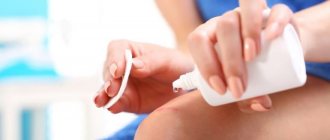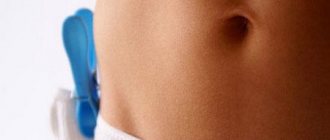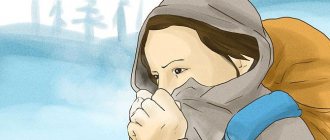Insects are living creatures that are widespread throughout the planet. There are hundreds of thousands of species of insects, and of all the creatures living on the planet, insects are the most common.
It is unlikely that you can meet a person on Earth who has never experienced an insect bite in his life. The body's reaction to such exposure depends on two factors. Firstly, it depends on the type of insect, because among them there are also poisonous varieties. Secondly, from the individual reactions of the body. Some people tolerate the bites easily, but for others the impact can be fatal.
Swelling from a blood-sucking insect bite
Each person's immune response to insect attack is individual. It is recommended to pay attention to the general condition of the victim. This is especially true for people prone to allergic reactions. Blood-sucking insects include:
- mosquitoes;
- bedbugs;
- horseflies;
- fleas;
- ticks.
Their bites can cause an allergic, traumatic and toxic reaction. Since the main symptoms are swelling and itching, you should know how to relieve swelling from a bite and reduce skin irritability. It is recommended to take the following measures:
- To narrow the blood vessels and reduce swelling, it is necessary to apply a cooling compress.
- A lotion with boric alcohol will not only help reduce swelling, but also relieve itching.
- For compresses with dimexide, the drug must be diluted with water in a ratio of 1:4.
- A soda compress is also considered an effective remedy. You can apply a thick paste of baking soda to the bites to relieve swelling and itching.
Additionally, you can use anti-inflammatory ointment and an antihistamine. The situation can become more complicated if the victim is allergic to insect venom. In addition, it should be borne in mind that most insects are carriers of serious diseases:
- ticks - Lyme disease, encephalitis;
- mosquitoes - a number of viruses;
- fleas are a plague.
In case of multiple bites, it is recommended to consult a therapist. It is especially important to do this if you have symptoms such as extensive swelling, high fever, vomiting, or difficulty breathing. The doctor will advise you on how to treat a tumor caused by a bite and how to alleviate the unpleasant symptoms.
Pharmaceutical external products for adults
External remedies for mosquito bites are available in the form of ointments, creams and gels. Ointments are more viscous and absorb more slowly, but they have a longer-lasting effect and do not require frequent applications. The gels have a light texture, are absorbed faster, without leaving greasy marks on the skin and clothes. Creams, in addition to eliminating itching, additionally moisturize the skin. Their texture occupies an intermediate position between ointments and gels.
The following pharmaceutical preparations will quickly relieve itching:
- Fenistil. It soothes the skin well, even if the bite wounds are already severely scratched. There are practically no contraindications due to the safety of the substances included in the composition. It should be applied 2-4 times a day.
- Psilo-balm. Relieves itching, redness and swelling, cools the skin. You need to smear mosquito bites with this balm 3-4 times a day. The gel is quickly absorbed, leaving no marks on the skin or clothes.
- Zinc ointment. An excellent antiseptic, it quickly heals wounds, just lubricate them 2-3 times a day.
- Bepanten. The active ingredient is dexpanthenol. The product acts after the first application, quickly reducing itching and providing an anti-inflammatory and healing effect.
- Rescuer. Another product containing dexpanthenol. The anti-itch and wound-healing effect is enhanced with sea buckthorn oil, zinc oxide and beeswax.
- Soventol. The active ingredient is baminip. Cools, quickly relieves itching and heals wounds. This product should be applied pointwise, always on clean skin, in a thin layer. When treating a large area of skin, negative side effects may occur. Contraindications: pregnancy.
- Hydrocortisone ointment. Quickly eliminates itching, swelling at the site of the bite and other allergic reactions, but is not suitable for pregnant and lactating women, because it belongs to the group of hormonal drugs.
- Advantan. It quickly relieves itching, but it also has a hormonal basis, so it should be used with caution, preferably after consultation with a doctor. Contraindicated in pregnancy, kidney and liver diseases.
- Gistan (not to be confused with Gistan-N). The main active ingredients are dimethicone and betulin, auxiliary ingredients are plant extracts. It has a pronounced antipruritic and anti-inflammatory property; after treatment, the wounds almost immediately stop itching.
- Vitaon. Contains camphor, mint, string and chamomile extracts. An excellent antipruritic remedy without restrictions on age and health status.
On the shelves of pharmacies and hypermarkets you can still find:
- Moskitol. Available in foam and gel form. Contains silver ions, dexpanthenol, chamomile extract, menthol. It relieves itching and inflammation well and has almost no restrictions in use.
- Gardex. Almost instantly relieves itching, cools and soothes the skin. Its composition is similar to Mosquitol, and also has almost no restrictions on age and health.
In addition, you can also wipe the wounds:
- alcohol tincture of calendula,
- hydrogen peroxide,
- brilliant green or iodine;
- ammonia or boric alcohol.
A balm popularly called “star” (that is, Vietnamese “golden star” balm) will also help. It must be applied in a thin layer. In the first seconds, tingling and coldness may appear - this is how menthol, camphor, eucalyptus oil, cloves and mint, which are part of the drug, act. The balm quickly neutralizes itching and destroys pathogenic flora, after which the wound will quickly heal.
Swelling from a poisonous insect bite
Swelling from the bites of scorpions and some types of spiders is always pronounced. In addition to swelling, other serious symptoms are diagnosed:
- strong pain;
- redness of the skin up to blisters with blood;
- dizziness;
- numbness of the bitten part of the body;
- drop in blood pressure;
- temperature increase;
- headache.
All signs appear against the background of a deterioration in the general condition of the victim. If you suspect a poisonous insect bite, you should immediately contact a medical facility for help. The doctor will prescribe something to relieve swelling from bites and other unpleasant symptoms.
Allergic reactions
Allergies to insect bites are common. Fortunately, in most cases, these reactions are mild. In this case, it is observed:
- Significant swelling forms at the site of the bite;
- Severe pain occurs;
- A rash may appear;
- Severe itching"
- Local increase in temperature in the place where the insect bite occurred.
If an allergic reaction to insect bites has occurred once, then the probability of its recurrence is 60%. A moderately severe allergic reaction occurs quite often; no special therapeutic measures are required.
An acute allergic reaction is much less common. Its signs:
- Swelling of the face and larynx;
- Difficulty breathing caused by swelling;
- Anxiety, nervousness;
- Tachycardia;
- Rashes all over the body, and the rash is very bright and itchy;
- Dizziness and a sharp decrease in blood pressure.
Perhaps the development of anaphylactic shock, loss of consciousness and even death.
Swelling from stinging insect bites
With the arrival of summer, insects become more active, they sting strongly and can cause a lot of trouble. The consequence of such a bite is usually severe swelling, redness of the skin, itching and, if you are prone to allergies, a problem with respiratory function. Special therapy will help relieve unpleasant symptoms. To do this, you should consult a doctor. The medical facility will explain how to treat swelling from bites.
Stinging insects include:
- wasps;
- bees;
- hornets;
- bumblebees.
The bites of these insects are very dangerous, so it is recommended to take immediate action. Before you go for a walk in the forest, you need to find out how to treat a tumor from a bite and take the necessary medications with you. Particularly serious consequences can occur after bites to the following parts of the body:
- face;
- neck;
- lips.
Swelling when bitten in these parts of the body is always accompanied by extensive swelling and sharp pain. If the victim is allergic to stinging insect bites, then the symptoms will be severe, including respiratory arrest. Due to the fact that the bite site becomes infected, the lymph nodes begin to enlarge. An inflammatory compaction occurs at the site of the bite, which may not go away for a very long period of time.
After a bite, swelling can be relieved with antihistamines. If your face and especially your mouth are injured, you should urgently call an ambulance. When going outdoors, it is recommended to take protective equipment and special medications with you.
An allergic reaction to the bites of such insects manifests itself as follows:
- extensive swelling at the site of the bite, quickly spreading to other parts of the body;
- skin rash;
- dizziness;
- strong pain.
If there are several bites, the victim may develop anaphylactic shock. Emergency assistance for stinging insect bites consists of the following:
- It is necessary to immediately remove the sting, and then wash the bite site with laundry soap.
- After rinsing with cool water, the wound should be treated with an antiseptic.
- It is recommended to apply an ice pack to prevent swelling and reduce pain. A cold compress will relieve irritation and itching.
- Swelling from a wasp or bee sting can be quickly relieved with compresses. For this purpose, you can use dimexide, which must first be diluted at the rate of one part of the drug and four parts of water. If the medicine is not on hand, you can dilute alcohol with water for lotions.
- It is recommended to lubricate the bites with hormonal ointment several times a day. The effect of the drug is designed for two hours, after which you need to wipe the skin with alcohol.
- It is recommended to drink plenty of fluids. This promotes abundant urination and, accordingly, the rapid removal of toxins from the body.
The appearance of infiltrates requires the use of antihistamines, antibacterial and anti-inflammatory drugs, which should be prescribed by a doctor. The medical facility will advise you on how to relieve swelling from a stinging insect bite. If the reaction is severe, treatment may take several days.
What insect bites can be dangerous?
In our latitudes, the greatest danger comes from the bites of poisonous hymenoptera insects and ants.
Despite the fact that such insects sting only for the purpose of self-defense, many people suffer from hymenoptera bites. According to statistics, more people die from wasp or bee bites than from snake bites.
Different types of insects inject venom in different ways. So wasps and bees use their sting (in this case, the bee that stings a person dies), and ants bite with their jaws, injecting poison. The danger of such bites lies in the development of allergic reactions to the components of the poison.
The bites of blood-sucking insects are not dangerous in themselves, although they can cause significant discomfort. The danger of bites lies in the fact that insects can be carriers of a wide variety of quite dangerous infections.
- Lice are spreaders of relapsing and typhus.
- Mosquitoes carry such an unpleasant disease as leishmaniasis.
- The common house fly can become a carrier of dysentery or typhoid.
- Fleas are carriers of pseudotuberculosis, tularemia, erysipeloid, and previously fleas carried plague.
- Mosquitoes of various types contribute to the spread of malaria, dengue fever, and yellow fever.
- Tick bites can lead to encephalitis, Lyme disease, Rocky Mountain spotted fever, and the bellied tick is the cause of grain scabies.
Swelling from a midge bite
In the forest on vacation or on the shore of a lake, it is difficult to avoid being attacked by midges. During the hot months of summer there are especially many midges. Midge bites do not pose a real threat to a person who is not prone to allergies. If an allergic reaction to insects occurs, it is recommended to consult a physician. The doctor will tell you how to quickly relieve swelling from bites.
The swelling appears due to a substance contained in the midge's saliva. Young children are especially vulnerable. An allergic reaction manifests itself as follows:
- Local reaction . The skin turns red and becomes covered with spots and blisters. The areas affected by midge bites itch and hurt. The limbs and face are especially affected. These parts of the body become very swollen.
- General reaction . If a person is severely damaged by midge bites, he is diagnosed with a rise in temperature, a drop in blood pressure and enlarged lymph nodes due to the inflammatory process.
To provide first aid, you need to know how to relieve swelling of the legs and arms after midge bites. You should refrain from scratching bitten parts of the body, as this can cause infection of the wounds. It is recommended to use an aseptic dressing with furatsilin. Salicylic-zinc ointment will help quickly reduce the inflammatory process.
Spider bites
There are very poisonous spiders, the bites of which can lead to the death of the victim. When attacked by such a spider, a person should be taken to the hospital immediately. In fact, not every spider is truly dangerous. Brown hermit spiders, karakurts and tarantulas are very dangerous. These insects are found in warm regions and do not like dampness. They usually live in places where people rarely visit, for example, in attics, among firewood. Tarantulas are quite large and prefer to settle in steppe sandy places. The brown recluse spider has a special pattern on its back that looks like a violin. And the karakurt's belly is decorated with a bright red pattern, similar to an hourglass.
A tarantula bite is quite painful. At the site of the lesion, the skin becomes red, swollen and painful. The general condition of the victim is deteriorating, he is lethargic and sleepy. Most often, these signs last for several days. The bite of a karakurt resembles a weak prick. The condition worsens after about an hour or two. The body at the site of the bite swells and begins to hurt. Gradually, the pain spreads to the lower back, leg muscles, stomach and upper back. I feel dizzy, feel nauseous, and my whole body aches. 2% of karakurt bites result in cardiac arrest and death.
When bitten by a brown recluse spider, the victim feels a slight burning sensation. But after 8 hours, the affected area turns red, hurts and becomes covered with a blister. After some time, the blister disappears, but a rather large ulcer remains, which gradually becomes even larger. The body temperature increases, the patient’s general well-being worsens, the body aches, and the victim becomes nervous. Deaths from bites of these spiders have been recorded. They are more dangerous for children.
What to do after a bite?
- Wash the body thoroughly at the affected area with soap and water.
- Achieve immobility of the affected limb. To do this, apply a splint. When moving, the blood flows faster and the poison spreads throughout the body more quickly.
- If a spider has bitten your leg or arm, you can lightly squeeze the limb just above the bite site, applying a kind of “tourniquet.” But you can’t squeeze the tissue too much. In addition, such a bandage cannot be kept on the body for a long time (no longer than an hour).
- Apply a cold lotion to the affected area.
- Drink a lot to cleanse the body of poisons through the kidneys.
- Take Aspirin (for adults) or Paracetamol.
Be sure to go to the hospital if:
- The victim is a child
- After the bite, the general health of the victim deteriorates significantly,
- There is a possibility of being bitten by a karakurt or brown recluse. In such cases, an antidote must be administered.
Swelling from a snake bite
An encounter with a snake on a hiking trip or while on vacation in the forest can end in disaster. According to the mechanism of toxic effects, poisons are divided into three groups:
- Neurotoxic . As a result of a snake bite, not only severe swelling occurs, but also paralysis of the motor and respiratory muscles. The victim complains of severe pain, numbness of the bitten part of the body and tingling. If you do not provide emergency assistance to a person, he will begin to feel dizzy due to a drop in blood pressure until he loses consciousness. Slurred speech and difficulty swallowing are considered bad signs.
- Hemorrhagic and local edematous-necrotic action . The victim is diagnosed with extensive swelling and severe blood clotting. At the site of the bite, two wounds from the snake’s teeth will be clearly visible. Over time, the swelling will increase and the skin will become bluish. In severe cases, the damaged part of the body becomes covered with blisters containing bloody contents; the bite area becomes a necrotic ulcer.
- Mixed type . The bite is characterized by extensive swelling, numerous hemorrhages and severe pain.
If, after a snake bite, huge swelling appears, you need to consult a doctor about what to do in this case. You can’t take risks; you need to urgently visit a medical facility.
First aid for a snake bite is as follows:
- The victim should be laid down.
- The bite site must be treated with iodine or alcohol.
- A pressure bandage should be applied to the affected part of the body.
- Ice should be applied over the bandage.
- Using a splint or wooden board, it is necessary to ensure the immobility of the affected limb.
- The person who has been bitten should be given as much fluid as possible.
Such measures will help stop the spread of poison throughout the body. After emergency assistance is provided, the victim should be taken to a medical facility.
How to provide first aid for insect bites
How to provide emergency care to a victim depends on the type of insect and the body’s reaction. It is necessary to remove the sting from the wound and squeeze out a drop until it bleeds. Wasps and bumblebees do not leave a sting, but their venom can cause anaphylactic shock. At the first symptoms of complications: pain, dizziness, severe swelling, extensive rash, you must contact the emergency room or a local physician. They will determine how to treat insect bites, as well as how to care for the wound.
Insect bites accompanied by allergies should include treatment with antihistamines (Fenistil, Zodak, Zyrtec, Tavegil, Suprastin) depending on individual characteristics. Apply ice to the affected area, so the temperature will drop locally, the blood will slow down, and the spread of the poison will be minimal. Help for insect bites is individual for each organism.
Knowledge of the basics of medical science and timely first aid in an emergency can make animal and insect bites painless and devoid of complications.
Prevention of bites
In order to protect yourself from insect attacks and not worry later about how to remove swelling after a bite, it is recommended to take protective measures before going to the forest or park. To combat mosquitoes, you can use the following recommendations:
- use of mosquito nets on windows;
- use of repellents with a deterrent effect;
- purchase of fumigators;
- applying a few drops of eucalyptus, tea tree or anise essential oil.
Some species of mosquitoes can carry malaria pathogens. When going to places where there are a lot of mosquitoes, you should first consult with a specialist about how to relieve swelling from a bite, and what medications you should take with you on a hike.
Preventative measures for wasp and bee stings include the following:
- you cannot provoke an insect to attack;
- do not wave your arms;
- there is no need to try to catch a wasp or try to crush an insect;
- When going on a picnic in the forest, it is not recommended to use perfume with a strong scent.
A tick attack poses a danger to humans not only because of the swelling after the bite, but also because of the risk of contracting infectious encephalitis. For prevention, you must adhere to the following rules:
- for a walk in the forest, wear clothes with long sleeves and cuffs, with elastic bands on the trousers;
- choose comfortable shoes and wear socks;
- in a high-risk area, get a preventive vaccination with anti-tick immunoglobulin.
If you follow certain rules, you can avoid a snake bite. When walking in the forest, it is recommended:
- wear high shoes;
- do not attempt to catch or kill the snake;
- look carefully at your feet.
Any bites should be reported to a doctor. The specialist will tell you how to get rid of unpleasant symptoms and relieve swelling from a bite.
Health Hazards of Animal Bites
The risk lurks not only in the forest, garden plot, near water bodies, but also in the urban area. Parks, rivers, ponds, basements, streets with stray cats and dogs pose a potential danger to humans. An assessment of external qualities will help determine what infected animals look like. Excessive tenderness or aggressiveness, increased salivation are signs of rabies.
Dangerous in nature:
- foxes and raccoons are often carriers of rabies,
- snakes, especially habitats of poisonous individuals, the poison can lead to general intoxication, irreversible consequences,
- wild ducks, geese, and swans transmit Newcastle disease virus and chlamydia.
Dangerous in the city:
- cats, dogs are carriers of lichen, toxoplasma, rabies,
- rats – leptospirosis, hemorrhagic fever, socodosis, typhus. They spread not only through bites, but also through contaminated food (vegetables, fruits) and water.
The aggressive behavior of an animal that has bitten a person can cause irreparable harm to physical and psychological health . Lacerated wounds after animal bites are not only dangerous due to bleeding, prolonged healing, scarring, but also infection with viral diseases (rabies, leptospirosis, toxoplasmosis, lichen).
Folk recipes
Home remedies are quite effective for swelling after a bite:
- Onion . Insect bites can be treated with an ordinary onion. Applying a cut onion to the bite site will reduce the risk of severe swelling. For good results, the bitten part of the body must be bandaged, thus fixing the pieces of onion.
- Mint leaves . Mash the leaves of the plant with your fingers and apply to the insect bite. This method is suitable if you had to deal with a bite in nature and there are no pharmaceutical drugs on hand.
- Essential oil . You need to drop a couple of drops on a cotton pad and apply it to the bitten part of the body. This manipulation effectively relieves swelling from the bite and heals the wound. The procedure can be repeated to strengthen the result.
Despite the effectiveness of folk remedies, it does not hurt to consult a doctor to avoid serious consequences.
Treatment with folk remedies immediately after a bite
Initially, you need to wash the wound. The best option is spring, running water. If there is none, use bottled mineral water. To enhance the effect, use a soap product - laundry, tar, toilet soap.
Almost immediately after an insect bite, a burning sensation, pain, and itching appears. To alleviate the condition and reduce the manifestations of allergies, antiseptic drugs are used. If this is not possible, you can use the following recipes.
Folk remedies for insect bites
- Lubricate the wound with your own saliva. A natural antiseptic will prevent infection from entering the wound, soothe it, and reduce itching and inflammation.
- Baking soda is diluted with water to form a paste. Apply to the sore spot until completely dry, rinse with water. The product eliminates itching and stops inflammation in 5 minutes.
- The bite site is treated with shaving foam or toothpaste containing menthol. Perfectly soothes, disinfects, and resists the development of allergies.
- A vinegar solution neutralizes poison, stops allergies, and prevents the spread of toxic substances through the blood. Pour a tablespoon of 9% vinegar into a glass of water at room temperature. Wipe the bite area and apply a compress for 5 minutes.
- Citric acid acts similarly to vinegar. Dissolve 0.5 teaspoons of acid in a glass of water, or use fresh lemon juice. Squeeze onto cotton wool, gauze or wipe the skin with a slice.
- Onions will help disinfect the wound and stop unpleasant symptoms. Wipe the wound with juice or apply the paste for 5 minutes. Wash off with water.
On a note!
In most cases, after first aid, the condition of the skin improves, itching disappears, and inflammation subsides. After 3 days, only a small spot remains that does not require special attention.
Domestic insect (bedbug) bites
There are more than fifty thousand varieties of bedbugs on the planet. There are about a thousand species in temperate climates. The bug feeds on average once a week. But if you consider that their colonies are very large, the problem of bedbug bites becomes clear. It is almost impossible to exist in the same room with them. Bedbugs prefer to suck the blood of children and women, because they have thinner skin. If there is a choice, they will go to feed on the body of a non-smoking family member.
Often, a bug bite is initially mistaken for a mosquito bite or even an allergy. Bedbugs love to settle in hard-to-reach corners: in cracks, under baseboards, in the cracks of furniture, behind paintings and wallpaper. During the day you can only find them if you look carefully.
A bug bite is absolutely painless, as it injects an anesthetic into the wound. Sometimes a bug, in order to drink blood, pierces the body in several places, since it cannot immediately find a nearby vessel. Bedbugs carry such serious diseases as Tuberculosis, Anthrax and Smallpox.
What to do?
If bedbugs are found, there are only two options to get rid of them: move to another home for a while or call pest control specialists. You can treat the apartment yourself. But for this you need to get a protective suit and a respirator, gloves and a spraying device.
Absolutely all objects, walls and floors need to be treated with the solution. That is, all surfaces and crevices. Approximately 100 ml of solution is used per square meter of upholstered furniture and carpets and half as much for floors, walls, and unupholstered wooden furniture. If you treat the room in parts, then the cunning bugs will simply move to the surfaces that have not yet been treated. Therefore, processing should be carried out immediately and everywhere. It is imperative to immediately treat door jambs and ventilation ducts.
After disinfestation, all windows should be opened and left for ventilation. During treatment, pets, plants and, of course, people should be removed. After airing, you need to wipe all the places you touch with a wet cloth. Sometimes not all bedbugs die immediately, the drug takes effect after a week or even a month, it all depends on which drug is chosen.
Tick bite
Ticks most often inhabit forests, but they also feel great in meadows. For a walk in nature, you should choose light-colored clothing - it is easier to spot insects on them. While walking, you should carefully examine each other once an hour. It is advisable that the bottom of the trousers be secured with an elastic band or cuff. You can tuck them into your boots.
Most often, ticks lie in wait for their victims, sitting on blades of grass or twigs. They can only crawl up, they cannot crawl down. You can play on this when choosing clothes for a walk. If a tick encounters an obstacle while traveling through your clothes, it will not be able to overcome it.
Returning home from a walk, you need to very carefully review not only your clothes, but also the flowers, twigs or toys brought from the forest.
What to do if a tick has attached itself?
- Do not apply any oils or alcohols to the tick. In such a situation, the insect will try to defend itself by injecting more poison into the body.
- Use tweezers (or at least your fingers) to take the insect and unscrew it like a screw. This method gives one hundred percent results. Just don’t need to pull it, but rather twist it.
- After removing the insect, you need to carefully examine the wound to see if the insect’s proboscis remains in it. Then treat with an alcohol preparation.
- Give the victim an antihistamine.
- If the region is unfavorable for encephalitis, it is advisable to immediately go to the clinic after a bite.










